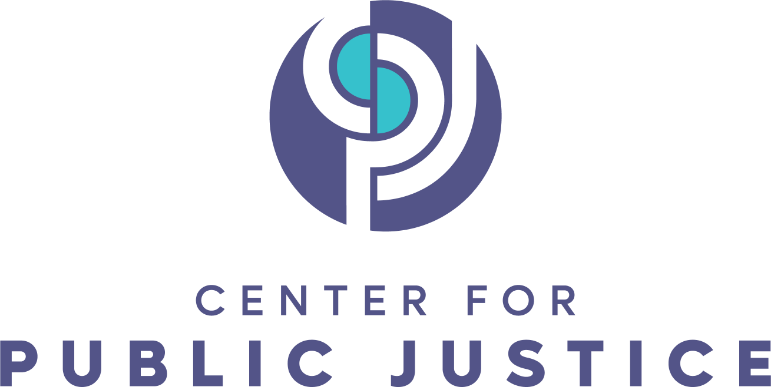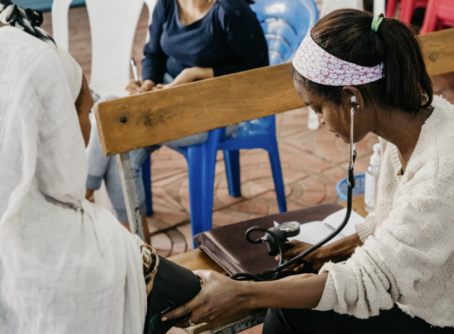
This article is one in a series examining the unique challenges that emerging adults – those ages 18 to 25 – face when they come into contact with the justice system. We hope this series illuminates the different angles of this issue and expands our public vision of how to seek justice for individuals and communities in this critical period of life.
What does just treatment for emerging adults with cognitive disabilities look like?
People with disabilities are often overrepresented in correctional facilities. A 2016 study carried out by the Bureau of Justice Statistics, a branch of the Department of Justice, found that 38% of all state and federal prisoners reported having a disability, with intellectual and behavioral disorders being the most common; about a quarter (24%) of state prisoners reported having a cognitive disability.
A number of factors may contribute to the high percentage of prisoners with developmental or cognitive disabilities. People with cognitive disabilities may have a harder time knowing the rules and following them, according to a 2008 article from Education and Training in Developmental Disabilities. They are also at higher risk of being falsely convicted, according to a 2020 article from the Journal of Criminal Law and Criminology.
“You get maladaptive coping strategies, people don’t understand that people might have additional challenges, and so, I think it increases the statistical likelihood of these people getting funneled into the criminal justice system,” says Nick Nichols, the program coordinator for the Calvin Prison Initiative, which provides higher education learning opportunities to incarcerated people.
Entry into the criminal justice system may exacerbate existing issues. The nature of prison prevents people from making their own decisions. This poses problems for re-entry and personal development with all prisoners, but especially younger prisoners with intellectual disabilities.
Because of their age and their disabilities, emerging adults — those within the 18-25 age group — may not have had substantial opportunities to practice making good decisions for themselves, and their disability may make it harder for them to develop this skill. This puts emerging adults with disabilities at greater risk for being exploited and, as noted previously, may be part of the reason so many adults with intellectual disabilities end up in prison.
Once emerging adults with intellectual disabilities are in prison, the prison education system often fails to equip them for life beyond its walls. For example, several states require a high school diploma or its equivalence for parole. And while people with cognitive disabilities can sometimes have this requirement waived, disabilities often go unnoticed.
Further, although all persons under the age of 21 whose disabilities have been diagnosed in childhood are entitled to a free, appropriate public education (FAPE), prison bureaucracy and lack of staffing often make it difficult to obtain and implement appropriate accommodations. This in turn makes it more difficult for prisoners to obtain the education and diploma they need to succeed in the outside world. High rates of incarceration may also reflect difficulties in securing care and housing for people with developmental disabilities, necessitating a response that doesn’t come from the prison system alone.
Part of the reason for high incarceration rates among adults with cognitive disabilities may be lack of other resources and supports. Prior to the 1960s, many people with disabilities, like people with severe mental illness, were held at state institutions. In 1963, President John F. Kennedy signed the Community Mental Health Act (CMHA), which provided funding for community mental health centers (CMHs). According to the Center for Healthcare Research and Transformation (CHRT), this act “started the trend of deinstitutionalizing mental health patients.”
This led to the shuttering of many state institutions. According to the CHRT, in 1965, the state of Michigan housed approximately 29,000 people in its 41 state psychiatric hospitals and centers for persons with developmental disabilities. Today, only five such institutions are still operated by the state of Michigan.
De-institutionalization was originally intended to allow people to re-enter society and live more independent lives with support from CMHs. However, in 1981, the Omnibus Budget Reconciliation Act, enacted under the Reagan administration cut direct federal funding for community-based nursing homes for mental health patients. State budget cuts, such as those enacted in Michigan by Governor John Engler in the 1990s, reduced funding for CMHs even further.
“If you look at these mental health institutions as service providers, whether that’s offering a mental health service or potentially offering a place to be, to house people, and then you shut the doors, what happens to the people? Are they cured somehow because we’ve defunded an institution? Of course not,” said Nichols.
Due to lack of funding, home and community-based services (HCBSs) for people with developmental disabilities often have long waiting lists. A study by the Kaiser Family Foundation (KFF) found that adults with intellectual and developmental disabilities waited, on average, 67 months to receive HCBSs available through state waivers, the longest wait of any group eligible for HCBS waivers.
Even in states that don’t have a waiting list, the system can still be complicated and confusing to navigate, which may prevent some people from receiving care. This makes the transition to adulthood more challenging and leaves younger adults more vulnerable to run-ins with the criminal justice system.
Inside the prison system
Changing the current system would require multiple levels of reform. Improved mental health training among law enforcement and court systems can reduce unnecessary arrests and police violence against people in crisis. A similar program in the court system might also prevent unfair sentencing. Community services could help vulnerable individuals develop strong social networks and secure housing. Both of these programs would help younger adults — especially those with intellectual disabilities or mental health issues — stay out of the criminal justice system as they transition into adulthood.
Similar programs within corrections facilities could help incarcerated people with disabilities live to their fullest potential within a correctional facility or successfully re-enter the outside world.
The structure of prison makes incarceration an isolating experience. For prisoners with disabilities, who are at risk of being victimized by other prisoners, the experience may be even more isolating. While some separation — for their safety or for the safety of others — may be necessary for certain prisoners, community and relationships with others is a critical and God-given part of being human. In Gen. 2:18, God declares that it is not good for humans to be alone.
Additionally, caring for one another is an integral part of being human. According to the CPJ’s Guideline on Political Community, “humans bear responsibility to one another.” For this reason, building community and relationships must be part of solutions.
One institution with specialized programs for those who have already entered the justice system is the Richard A. Handlon Correctional Facility, a level-II security prison located in Ionia, Michigan. Handlon hosts a variety of programs, including the Calvin Prison Initiative (CPI) and one of the state’s two Adaptive Skills Rehabilitation Program (ASRP) units.
Prior to being assigned a correctional facility, newly incarcerated people in the state of Michigan are screened for several factors, including cognitive ability and mental health status. If it is determined that a prisoner needs additional support due to cognitive limitations, they may be assigned to an ASRP unit.
As mandated in a 2010 Michigan policy directive, ASRP units offer — or are supposed to offer — “specialized programming in a supportive housing environment” through a team of support staff. For prisoners with serious mental illness, there is a similar program called Residential Treatment Program, which Handlon also hosts.
CPI is a college program offered by Calvin University and Calvin Theological Seminary to inmates in Handlon’s general-population units.
Usually, prisoners from ASRP are kept separate from prisoners in other units. While the Americans with Disabilities Act (ADA) generally prohibits segregating prisoners with disabilities, prisoners with cognitive disabilities are at risk of being exploited by other prisoners. Thus, prisoners with severe intellectual disabilities or mental illness are kept separate from other prisoners in most states.
However, staff mistreatment of inmates may also be an issue. In a 2022 interview with Chimes, Rick Reamsma, a peer mentor and recent CPI graduate, says that “some of the staff … also see [ASRP prisoners] as less-than, and so they … bully them around a bit themselves,” noting a specific staff member who yelled at ASRP prisoners and called them slurs.
Reamsma and some other CPI graduates have been in contact with inmates from Handlon’s ASRP unit due to a new mentorship program at Handlon. According to Christina Haven, a social worker for CPI, the idea for the mentorship program came early in 2020, just before COVID hit, as the first cohort of CPI students approached graduation.
“The previous warden, Warden [DeWayne] Burton, was all about how do we utilize these students and the things that you’re training them in,” said Haven.
Previously, CPI students, assisted by a professor, had created a curriculum for a peer-led support group for substance abuse issues and led support groups in several units, including the ASRP and RTP units. According to Haven, the program received positive reports, especially from staff in the ASRP and RTP units, and Handlon suggested having CPI graduates help with ASRP inmates on a more regular basis.
This led to the creation of the mentorship program, where inmates who have graduated from the CPI program live in the ASRP unit and act as mentors or peer supports to people in ASRP. This program is available to adult inmates and graduates of all ages. However, it provides a model that may be especially transformative for emerging adult inmates in this category, who need heightened support as they learn how to navigate adulthood with the complicating factor of a cognitive disability.
“These guys just need general life skills. Like, they don’t shower, they don’t know how to read, they don’t know how to write, so many things,” says Haven.
CPI mentors can help with these challenges by encouraging good hygiene, offering academic support and teaching communication skills. They may also hang out with or play games with people in ASRP. According to Haven, mentors offered more formal programming at one point, but for now that aspect is on hold.
The fledgling program may serve as a suggestion for how a similar program — formal or informal — could function outside the program. Relationships with peers and mentors — both disabled and non-disabled — could serve as a means of drawing adults with cognitive disabilities into the community. While this communal aspect would benefit people of all ages, it could be especially important as a context to encourage emerging adults to form good relationships and social habits that will keep them out of the criminal justice system.
Further needs
There is still room for growth. While ASRP and RTP units are supposed to offer additional support, Haven, whose work with CPI puts her in regular contact with Handlon staff and inmates, says what they offer is “still quite lacking.”
“They are so understaffed, and there’s high needs because some of these people are incarcerated because of their high mental health needs or their cognitive disabilities, and they don’t have the staff to meet those needs so often they medicate or over-medicate,” says Haven.
Trained peer mentors, like those at Handlon, could help reduce some of these issues by helping ASRP prisoners with tasks of daily living and advocating for them to staff.
However, the prison system itself may not be the best solution for most people. Even with reforms and improvements, confinement in correctional facilities present significant disadvantages to the people contained. The large numbers of people — as well as the institutional framework — pose challenges in providing individualized care.
“There’s just not much about what happens in prison that encourages people to develop into whole human beings,” says Pam Withrow, a retired warden who worked in Michigan state corrections from 1976 until 2001. This is detrimental for incarcerated individuals of all ages, but particularly for emerging adults, who are at a critical phase of development.
According to Nichols, corrections in Michigan has “changed enormously” in recent years, with significant improvements to re-entry programming. However, he also is skeptical of using incarceration as a primary means to contain people with intellectual disability or mental health needs.
According to Nichols, a better long-term solution would include more community-based support as well as improved training for law enforcement on how to handle mental health issues so that incarceration is not the only solution.
This would allow these adults to stay in the community where they enjoy better opportunities to make decisions for themselves and learn how to navigate social situations.
“I think a lot of people that are there [in prison], with proper community health or involvement, could achieve a different result,” says Nichols.
Unlike some other people who might be diverted from the prison system, those with intellectual disabilities will likely require long-term support, since their disability is unlikely to go away or be “treated.” Thus, solutions will need to be designed to last. They will likely require cooperation with various government agencies, including law enforcement, community mental health and welfare, to create structures that help meet formal needs, such as food or shelter.
Creating a better solution will also require support from the community and from individual citizens. According to the Center for Public Justice’s Guideline on Citizenship, “Responsible citizenship includes not only abiding by the law, paying taxes, and enjoying the benefits of law-abiding behavior, but also helping to shape the political community to conform to the demands of justice.” In part, this might look like advocating and voting for particular government policies that support individuals with disabilities, especially emerging adults. However, some aspects of human wellbeing cannot be created solely by a government program or structure, because not all needs can be legislated or funded.
In order to live and flourish in the community, people — especially those whose health conditions make them more vulnerable — need to be supported and encouraged in specific, tangible ways. The CPI mentors, acting within the prison microcosm, have already demonstrated how these needs might be met: helping someone navigate a tricky situation, showing them how to do something or simply hanging out.
Both institutionalization and incarceration involve putting people where we do not have to see them, thereby closing our eyes to a critical element of our Christian responsibility. However, Jesus’ example is not one of avoidance or selfish caution, but inclusion and compassion. Therefore, our solution to the prison system’s dysfunction regarding those with intellectual disabilities must involve creating space for these individuals to be a part of our lives.
Grace Buller, managing editor of Calvin Chimes, is a student and journalist based in West Michigan.





